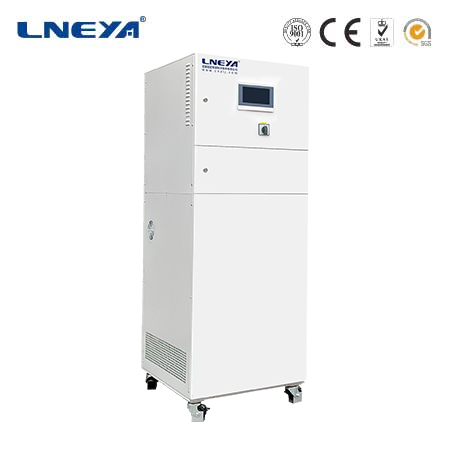20 ton chiller
20-Ton Chiller: An In-Depth Analysis
A 20-ton chiller is a critical piece of equipment in the heating, ventilation, and air conditioning (HVAC) industry, capable of removing 20 tons of heat per hour from a building or industrial process. This article delves into the various aspects of 20-ton chillers, providing a thorough understanding of their operation, benefits, and considerations.

Types of 20-Ton Chillers
20-ton chillers can be categorized based on their cooling mechanisms and design:
Screw Chillers: These chillers use a screw compressor for efficient cooling and are known for their reliability and high efficiency at part-load conditions.
Scroll Chillers: Scroll compressors offer a quiet and efficient cooling solution, making them suitable for applications where noise is a concern.
Centrifugal Chillers: These high-capacity chillers are ideal for large-scale applications and are known for their ability to handle significant cooling loads.
Air-Cooled Chillers: These chillers use air as the cooling medium, eliminating the need for water cooling towers and making them suitable for areas with limited water resources.
Water-Cooled Chillers: These chillers use water as the cooling medium and are more efficient in warmer climates where water is readily available.

Applications of 20-Ton Chillers
20-ton chillers are used in a variety of applications due to their ability to provide precise temperature control:
Industrial Processes: Chillers are used in various manufacturing processes, such as plastic injection molding, chemical processing, and food processing, where precise temperature control is crucial.
Commercial Buildings: In commercial buildings, chillers provide cooling for air conditioning systems, ensuring comfortable indoor environments for occupants.
Data Centers: Chillers are essential in data centers to maintain the temperature of servers and IT equipment, preventing overheating and ensuring optimal performance.
Efficiency of 20-Ton Chillers
The efficiency of a 20-ton chiller can be measured in several ways, including kW/Ton, COP (Coefficient of Performance), EER (Energy Efficiency Ratio), and IPLV/NPLV (Integrated/Nominal Part-Load Value). A more efficient chiller will have a lower kW/Ton rating and a higher COP, EER, and IPLV/NPLV.
Safety Considerations
Safety is a paramount concern in chiller engineering. Chillers operate under high pressure and use refrigerants that can be hazardous if not handled properly. Therefore, it is crucial to adhere to safety standards and guidelines, such as those set by the American Society of Heating, Refrigerating, and Air-Conditioning Engineers (ASHRAE).
Industry Standards and Regulations

Chiller engineering must comply with various industry standards and regulations to ensure safety, efficiency, and environmental compliance. These standards cover design, construction, operation, and maintenance of chiller systems.
Maintenance
Regular maintenance is essential for the optimal performance and longevity of chiller systems. Maintenance activities include cleaning, inspecting, and replacing parts as needed to ensure the chiller operates efficiently and safely.
Technology Advancements
The integration of the Internet of Things (IoT) and artificial intelligence (AI) in chiller systems is improving efficiency, operational flexibility, and system reliability. These advancements allow for better monitoring, predictive maintenance, and energy management.
Environmental Impact and Energy Efficiency
Modern 20-ton chillers are designed with energy efficiency and minimal environmental impact in mind. They often use environmentally friendly refrigerants and are built to consume less energy, reducing the carbon footprint of cooling systems.
Industry Trends and Market Analysis
The chiller market is experiencing steady growth due to the increasing demand for energy-efficient cooling solutions, driven by environmental concerns and technological advancements. The market for 20-ton chillers is expected to grow as more industries and commercial buildings seek to reduce their energy consumption and environmental impact.
In conclusion, 20-ton chillers are indispensable in providing cooling for a variety of applications. With advancements in technology and a growing focus on energy efficiency and environmental impact, the field of chiller engineering continues to evolve, offering new opportunities for innovation and improvement.
Related recommendations
chiller for injection molding machine
440Chiller for Injection Molding Machine: Enhancing Efficiency and Quality Industrial chillers are crucial components in the injection molding process, providing precise temperature control to ens...
View detailsrecirculating water cooling system
509Recirculating Water Cooling Systems: Efficiency and Environmental Impact Recirculating water cooling systems are integral to various industrial processes, providing a closed-loop method for hea...
View detailslaboratory water heater
369Introduction to Laboratory Water HeatersLaboratory water heaters, commonly known as water baths, are crucial for providing a stable temperature environment in scientific laboratories. They are use...
View detailstemperature process control system
422Temperature Process Control Systems: Ensuring Precision in Industrial Processes Temperature process control systems are essential in maintaining the precise temperature conditions required for ...
View details
 LNEYA Thermal Test Chillers
LNEYA Thermal Test Chillers







HelloPlease log in